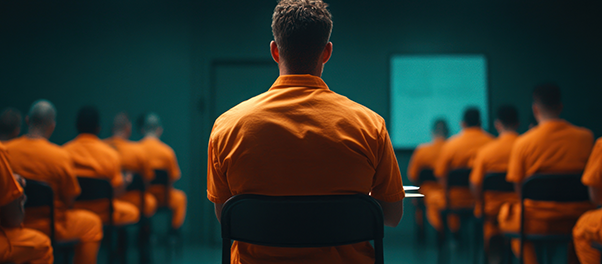Mothers’ attitudes toward police shape their children’s attitudes. This is particularly important because when their sons were rearrested, mothers had more negative attitudes toward the police than when sons were not rearrested. This is the bottom line of a recently published article in Law and Human Behavior. Below is a summary of the research and findings as well as a translation of this research into practice.

Featured Article | Law and Human Behavior | 2019, Vol. 43, No. 3, 220-231
The Role of Rearrests in Juvenile Offenders’ and Their Mothers’ Attitudes Toward Police
Author
Caitlin Cavanagh, School of Criminal Justice, Michigan State University
Elizabeth Cauffman, Psychological Science, University of California, Irvine
Abstract
Both personal experience and parental attitudes shape youths’ attitudes toward the justice system. The present study tested the influence of (a) youth rearrests and (b) parents’ attitudes toward police on trajectories of youthful offenders’ attitudes toward police over 3 years. Among a sample of 317 first-time male juvenile offenders and their mothers, group-based trajectory modeling identified 4 trajectories of youths’ attitudes toward police over the 3 years since the youths’ first arrests. Mothers with more positive initial attitudes toward the police were more likely to have sons who were part of 1 of the 2 positive attitude trajectory groups than the 2 negative attitude trajectory groups. In contrast, youth rearrests were rarely associated with trajectory group membership, suggesting that a mother’s attitude toward the police may outweigh a youth’s own experience (via arrests) with the justice system in determining trajectories of his attitudes toward the police. Additionally, the present study tests whether parents’ own attitudes toward police are predicted by their children’s rearrests. We found that mothers whose sons were rearrested during the study period had more negative attitudes toward the police. The results add a novel component to our understanding of family attitude dynamics as related to perceptions of law enforcement and juvenile arrests. Overall, a family level perspective is necessary when considering the effects of rearrests on youths’—and their parents’—attitudes toward the police.
Keywords
delinquency, juvenile justice, procedural justice, family processes
Summary of the Research
“Youths’ attitudes toward the justice system are malleable through adolescence with the accrual of personal experiences. Additionally, a youth’s social context (the attitudes and factual or perceived experiences of family, peers, and community members) is critical in informing the youth’s developing justice system attitudes. However, little is known about how parents’ attitudes and youths’ personal experience shape youth attitudes toward police over time. Furthermore, it is not presently known whether children’s continued contact with the justice system predicts parents’ justice system attitudes. Specifically, do youth rearrests change the way that parents view the police? To address this tension, the present study (a) examined the effect of two socializing mechanisms—mothers’ attitudes and youths’ rearrests—on trajectories of youths’ attitudes toward police; and (b) tested the degree to which parents’ own attitudes toward police are associated with their children’s rearrests” (p. 220).
“‘Socialization,’ in general, refers to the way that norms, values, attitudes, and customs are transmitted and absorbed from socializing agents—traditionally, the bulk of whom are parents—to children. There is overwhelming evidence that parents’ attitudes shape their children’s attitudes during adolescence across a variety of domains. For example, parents transfer their attitudes regarding marital roles, political orientation and participation, racial prejudice, moral values, and aggression to their children. Parental attitudes may be transmitted to youth indirectly though modeling or through direct messages” (p. 220-221).
“‘Legal socialization’ is defined as the process through which adolescents develop attitudes and beliefs regarding the justice system and authority (e.g., legal actors, legal processes, and the law itself). A normative part of adolescence includes the development of attitudes toward the justice system. Positive attitudes toward the justice system reflect one’s belief that legal actors, entities, and processes are valid, effective, and fair, and are associated with law-abiding behavior” (p. 221).
“The majority of legal socialization research has focused on attitudes toward the legitimacy of the justice system as a whole, or on individual legal actors, such as police or judges. However, some research has also found evidence that legal socialization applies to other authority figures (e.g., parents, teachers), such that when nonlegal authorities are seen as legitimate, delinquency is reduced. Proponents of this body of work suggest that interactions between youth and nonlegal authorities may be a source of legal values, such that adult legal socializers play an important developmental role in informing youths’ understanding of the justice system” (p. 221).
“Although the relation between adolescent attitudes toward the police and delinquency is well-described in the literature, little research has examined how youths’ attitudes toward the police develop over time, and the role that mothers’ attitudes play in youth attitude trajectories. Also lacking are longitudinal studies that assess how youths’ and mothers’ attitudes change over time in response to youth rearrests. For this reason, researchers are currently ill equipped to inform practitioners on ways to foster a more positive relationship between youth, their families, and law enforcement” (p. 222).
“The present study filled this gap in the literature and examined how youth rearrests and mothers’ attitudes toward police are associated with youths’ attitude trajectories over time. Specifically, our first research aim was to examine two socializing mechanisms of the trajectories of youths’ attitudes toward police: mothers’ attitudes and official rearrests. We expected that mothers would socialize their children’s attitudes over time, such that mothers who viewed police more positively would have youth who were more likely to belong to a trajectory group reflecting positive attitudes toward police. Furthermore, we expected that being rearrested would be associated with youths’ trajectories, such that youth who were rearrested would be more likely to belong to a low or declining attitude trajectory group. Our second aim was to test whether youth rearrests predict mothers’ attitudes toward the police. We expected that youth who were rearrested would have mothers who felt more negatively about the police over time” (p. 222).
“The attitudes that youth—and their parents—hold toward the police are inherently tied to questions of public safety. The present study tested the effect of youth rearrests on mothers’ attitudes toward the police, as well as how mothers’ attitudes and youths’ own rearrests were associated with youth attitude trajectories over the three years following their first arrest. Overall, mothers’ attitudes toward police—but not youth rearrests—were associated with youth attitude trajectories. Furthermore, mothers’ attitudes toward the police became more negative over time if their sons were rearrested” (p. 225-226).
“Taken together, the results of the present study suggested that a child’s rearrest may have consequences for his mother’s attitudes toward the police, which in turn are associated with the youth’s own attitudes. This study expanded on previous literature in two ways. First, the results suggested that mothers’ attitudes toward police do not just correspond with sons’ attitudes at a single point in time, but rather were associated with the trajectories of youths’ attitudes toward police as youth mature into early adulthood. Second, and particularly strikingly, mothers’ negative attitudes—but not sons’ own rearrests—were associated with trajectories of more negative attitudes toward the police over time among youthful offenders” (p. 228-229).
Translating Research into Practice
“A family level perspective is necessary when considering the effects of rearrests on youths’—and their parents’—attitudes toward the police. The present study adds nuance to the current appreciation of the relation between youth rearrests and mothers’ and sons’ attitudes toward the police. Overall, the results support increased attention to family dynamics and the role of parents in youths’ justice system contact. Although beyond the scope of the current study due to methodological limitations, there are practical applications for this line of research. For example, in light of evidence that juvenile arrests have an iatrogenic effect on delinquency as mediated by attitudes toward the police, understanding the way that parents’ and youths’ attitudes toward the police develop over time could reduce recidivism among youth, increase community-level support of local police, increase crime reporting, and ultimately reduce costs associated with law enforcement to families and taxpayers” (p. 229).
Other Interesting Tidbits for Researchers and Clinicians
“Future research might expand on this study by tracking attitudes of serious youthful offenders in order to elucidate distinctions in socialization patterns between youth who have been arrested for serious relative to low-level crimes that may lend to different rehabilitative practices. The literature would also benefit from studies comparing the respective strength of mothers and fathers as socializers for sons’ and daughters’ attitudes toward the justice system, especially given differences in attitudes toward the police by gender in community samples of youth. Finally, future research should include measures of family functioning to understand the relation between legal socialization and broader family dynamics. For example, research in other socialization domains suggests that higher quality parent–child relationships are associated with greater dyadic attitude similarity. Additionally, although it is understood that similar-aged peers (especially delinquent peers) socialize youths’ justice system attitudes, the role of siblings in legal socialization is not well understood. Future research should incorporate the attitudes of siblings as they relate to youth attitudes toward the justice system” (p. 229).
Join the Discussion


















